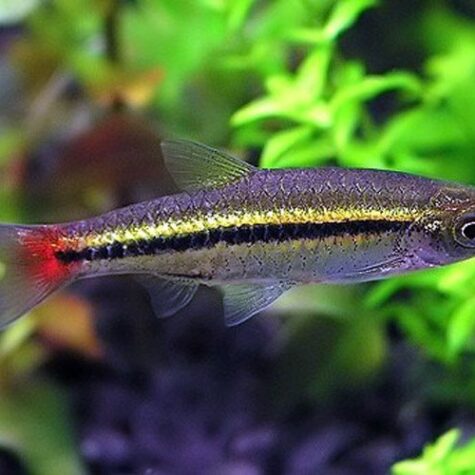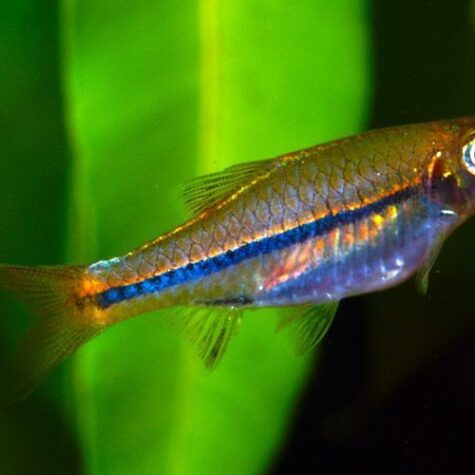$5.99 Original price was: $5.99.$4.19Current price is: $4.19.
*NOTE: AS A FISH FARM, WE DO NOT OFFER GENDER SPECIFIC SEXING ON FISH STOCK. REQUEST FOR MALES OR FEMALES CAN ONLY BE ACCOMMODATED IF THE ITEM SPECIFIES GENDER IN THE DESCRIPTION SUCH AS: MALE BETTA, FEMALE GUPPY, ETC SORRY FOR ANY INCONVENIENCE.
The Dwarf rasbora is a very peaceful species. It is a shoaling fish that always should be kept in groups of 8 fish or more. Larger shoals will result in more colorful and active fish. Dwarf rasbora is not suitable for community aquarium due to its very timid nature and small size but ideal for tanks with small shrimp and oher tiny inhabitants. It will get stressed when kept with most other larger species. The Dwarf rasbora is an excellent choice for aquascaped tanks where plants play the most important part.
The Dwarf or Spotted rasbora originates from South Eastern Asia where it is found in Thailand, Peninsular Malaysia, and Singapore. There are also (less reliable) reports of this species being present on Borneo and Sumatra. It is widely distributed in Peninsular Malaysia while the other countries have more limited populations. Different populations from different countries have different colorations and patterns.
In the wild, the Dwarf rasbora inhabits black water streams and rivers connected to peat swamps. It lives along fallen leaves and braches in dark water (the dark color is caused by tannins). The water in these areas is usually very soft and very acidic. They are often found in areas that have a pH-value as low as 4.0. The habitat of this species is threatened by human development and farming.
The Dwarf rasbora can be sensitive to changes in water conditions it is therefore important to allow acclimatization to take some time. This is true regardless of whether you just bough them or are moving them between aquariums at home.
The Dwarf rasbora can be kept in rather small aquariums. A 6 gallon / 30 L tank is enough for a small to medium sized shoal. The aquarium should be densely planted with floating plants on the surface to dim the light. You should also use bogwood and rocks to created shaded areas in which the Dwarf rasboras can seek shelter from the light and hide when frightened. Adding aquarium safe leaves on the bottom gives the fish more hiding places and creates a habitat more like the ones where they live in the wild. Leaves will also increase the chance of fry surviving in the holding tank. The bottom substrate is preferably dark soft sand. Filtration can be kept to a minimum.
The Dwarf rasbora is a black water fish and appreciates if the bogwood and leaves stain the water with tannins. The water can be filtered through peat to increase tannin levels in the water and make the tank more similar to their natural habitat. Simulating their natural habitat will make the rasboras display more vibrant colors. It is important that the tank is well established before adding this sensitive fish. Dwarf rasboras are predators feeding on very small prey but they will easily adapt to accept flake food in aquariums. Flake food can be used as the basis for their diet but they need to be fed a varied diet including different types of live and frozen food as well to do well and show their best colors. A varied diet with a lot of frozen and live food is required to breed this species. Make sure to choose food that is small enough to suit this small species. Sexing Dwarf rasbora is not that hard. The females have rounder bellies and are (usually but not always) larger than males. The males show more intense coloring. This is especially true for dominant males.
This is one of the most popular dwarf rasbora species we offer and one of the hardest to find in your local shops.
Size at shipping: Full grown, and about the length of a dime, TINY. SHIPS GOOD
Min order no less than 6




